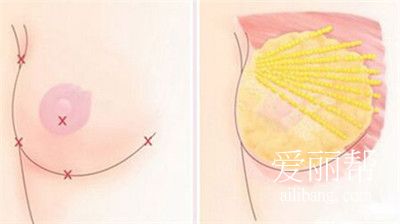What are the risks of autologous fat breast augmentation?
In brief, autologous fat breast augmentation is to extract excess fat from women's waist, abdomen, legs and other parts, and then inject it into the chest without surgery, which can achieve both breast augmentation and slimming. However, many women do not have a special understanding of autologous fat breast augmentation, especially the limit of fat survival. Doctors are required to inject excessive fat before surgery. Although this can achieve the effect of plump chest in a short time, over time, some fat will be absorbed or withered to death, which will cause more serious adverse reactions.
Therefore, doctors in general regular hospital institutions will recommend fat injection according to individual physical condition. The survival rate of different transplanted fat is also different. Under normal circumstances, only about 50% of 100 ml fat can survive, but if it exceeds 200 ml, the survival rate usually does not exceed 50%. And for beauty seekers, autologous fat breast augmentation is more acceptable than prosthesis breast augmentation, but the following adverse reactions may still exist:

1. Infection: The infection usually occurs 5-7 days after the operation, showing redness, swelling, heat and pain in the breast. Once the infection occurs, it needs to be treated as soon as possible.
2. Fat liquefaction: too much fat tissue is injected, or the fat tissue naturally gathers into blocks after injection, resulting in the failure of injected fat to survive, resulting in necrosis and liquefaction of fat. In case of fat liquefaction, it is necessary to go to the hospital for puncture and extraction of liquid or negative pressure drainage.
3. Hemorrhage: when liposuction is used, the injury is large, leading to bleeding, injection injury or the patient's coagulation mechanism obstacle, which can form a hematoma, and the hematoma should be treated by a doctor.
4. Nodule: The injected fat particles are gathered into blocks, which are spherical and wrapped by breast fibrous tissue, and the fat cells are inactivated and calcified. It can appear three months after the operation, generally without discomfort, and can not be treated. If you want to remove it, you can go to the hospital for treatment.
5. Interference with breast cancer screening: non viable fat cells will heal and form scars at the dead site. These scar tissues can be detected as calcification by mammography and MRI scanning, thus affecting the screening judgment of breast cancer.
6. Poor breast shape: due to uneven fat absorption, the amount of absorption is also different, resulting in local depression or two asymmetric breasts. Fat particles can be injected again at the concave part to make the shape more beautiful.
Through the above explanation, do you have an answer to "What are the risks of breast augmentation with autologous fat?"? Alibang hereby reminds the beauty lovers that they must choose a formal and qualified plastic surgery institution and a responsible plastic surgeon when choosing plastic surgery. At the same time, they should make preparations before and after the surgery, so that the plastic surgery can achieve good results. If you have any questions, you can directly consult our plastic surgery consultants online, and they will give you professional and detailed answers.

